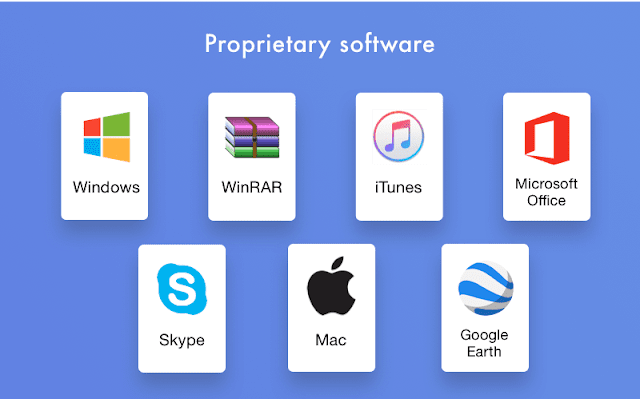Important events in Open Source history
1980 – Usenet arrives
Open source development has always been driven by
collaboration, and with the arrival of Usenet, developers could collaborate on
a worldwide level like never before and made it easy to share software.
Usenet (built on top of the infrastructure that is now
called the Internet) was in many ways a precursor to today’s Internet forums
and predated the World Wide Web by over a decade.
1983 – Richard Stallman starts the GNU Project
Started by Richard Stallman in 1983, the GNU Project is a
mass collaboration project for open and free software that has flourished even
to this day. Stallman followed up the GNU Project with the creation of the Free
Software Foundation in 1985 to further support the free software community.
The GNU Project has resulted in a huge amount of open source
software over time and gave birth to the GNU General Public License (GPL),
arguably the most popular open source license model out there. And when the
Linux kernel arrived, GNU software made it into a complete OS.
1989 – Work begins on 386BSD
Although BSD Unix had been open source for many years and
had one of the first open source licenses (the BSD license), unfortunately you also
needed a separate license from AT&T to be able to use it because it
included AT&T Unix code.
This problem was finally fixed by William and Lynne Jolitz
in 1992 when they released 386BSD (also called Jolix). In development since
1989, it was the first completely free and open source version of BSD,
independent of the AT&T license. It would spawn several versions of BSD
that are still in wide use today; FreeBSD, NetBSD and OpenBSD.
1991 – Linus Torvalds creates Linux
The decision by Linus Torvalds to develop his own version of
the Minix kernel resulted in the now world-famous Linux. (An interesting side
note is that he initially wanted to call it “Freax”.) The Linux kernel became
the last piece of the puzzle for the GNU operating system project, providing an
entirely free and open source operating system.
Torvalds famously posted the following message to the comp.os.minix
newsgroup in 1991:
I’m doing a (free) operating system (just a hobby, won’t be
big and professional like gnu) for 386(486) AT clones.
1993 – The founding of Red Hat
Red Hat, a company based around its own Linux distribution,
made open source big business. The company proved that it was possible to be
highly profitable with something that is, at its core, free. Red Hat has raised
the profile of open source significantly over the years.
To give you an idea of how much buzz there was around Red
Hat in the late ‘90s, when it went public in 1999, it had one of the largest
first-day gains in the history of Wall Street.
1995 – Rasmus Lerdorf creates PHP
Widely used business applications have been written in PHP.
1994 – Development starts on MySQL
Michael Widenius and David Axmark started developing MySQL
in 1994 and released the
first version in 1995.
Over the years, MySQL has become the open source database
solution of choice and is used by a huge number of companies and websites like
Facebook and Wikipedia. As of 2009, there were more than 11 million MySQL
installations.
MySQL has also, just like Red Hat did, shown how open source
can be big business. In 2008, Sun paid one billion dollars for the company.
1996 – Apache takes over the Web
The Apache HTTP server showed how an open source product can
come to almost completely dominate a market. Based on the NSCA HTTPd, one of
the very first web servers, Apache has consistently been the most widely used
web server software on the Internet since 1996, and it doesn’t look like this
will change anytime soon.
1998 – Netscape open sources its web browser
In its increasingly desperate war with Microsoft and
Internet Explorer, Netscape finally decided to open source its web browser
early in 1998 and started the open source community Mozilla to hold the reigns.
Although Netscape eventually faded into obscurity and
folded, without this historic move there would have been no Mozilla, and
without Mozilla there would have been no Firefox, and we all know how influential
that web browser has become.
2003 - Firefox
Descended from the Mozilla Application Suite, the project
started as an experimental branch of the Mozilla Project. Originally titled
Phoenix, then renamed as Firebird, the project was finally named Mozilla
Firefox. The version 1.0 was released on November 9, 2004.
2004 – Canonical releases Ubuntu
When South African millionaire Mark Shuttleworth’s company,
Canonical, released the Debian-based Ubuntu in 2004, few could have expected
what a massive success it would become. Ubuntu quickly became the most widely
used Linux distribution by far, especially on the desktop, and has brought
Linux to the masses like no other distribution.
2008 - Android
Released by Google

Comments
Post a Comment